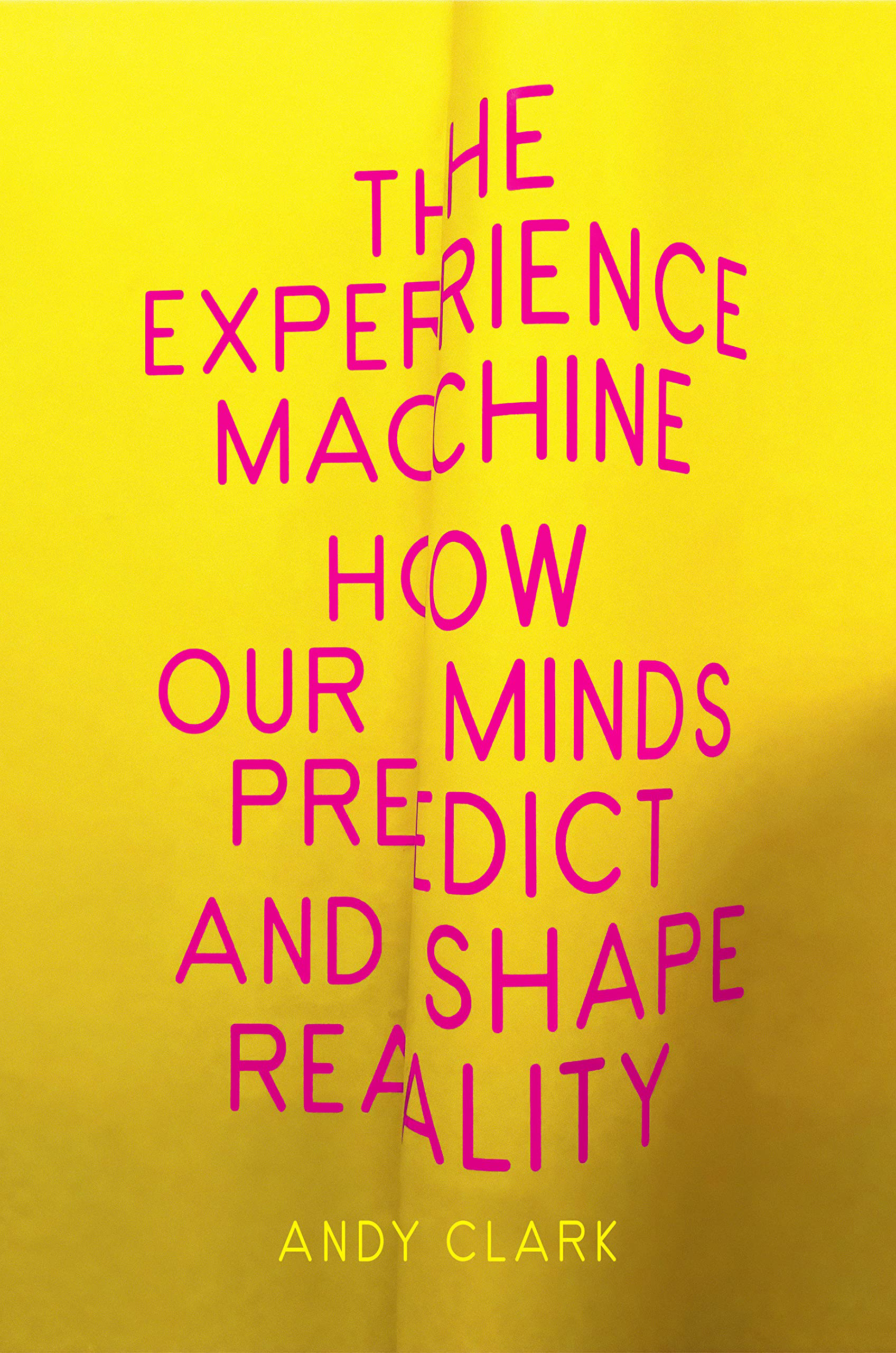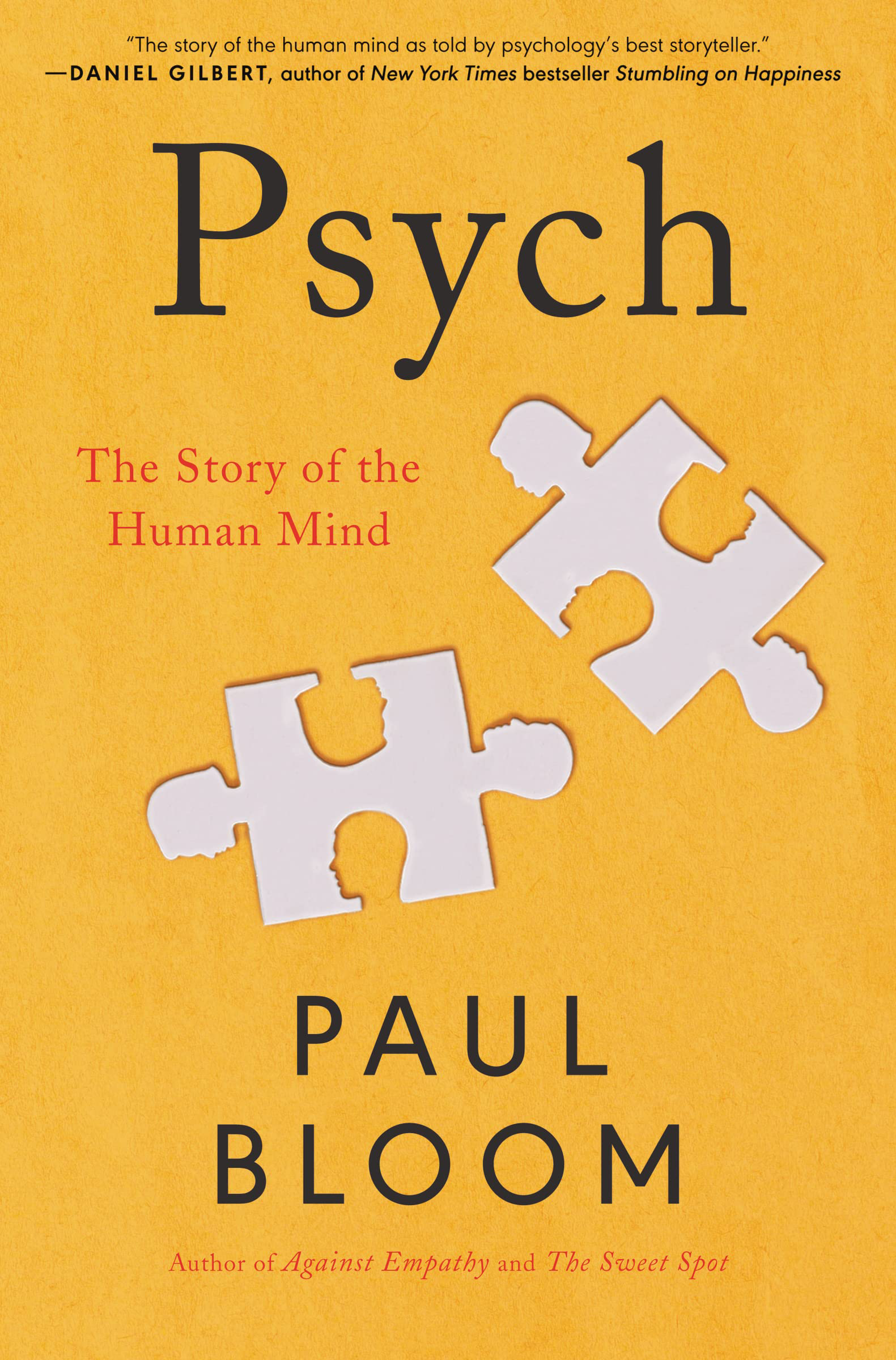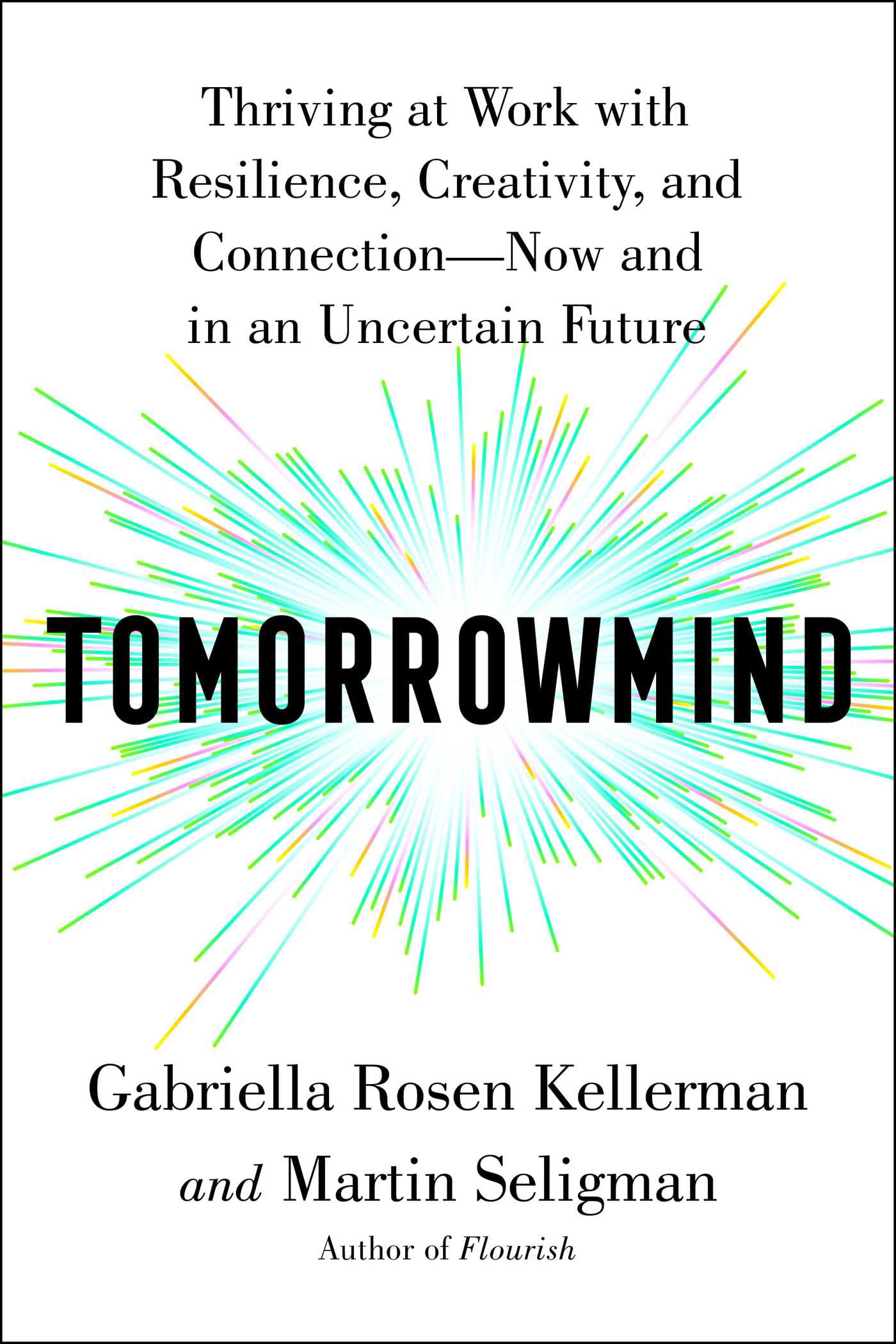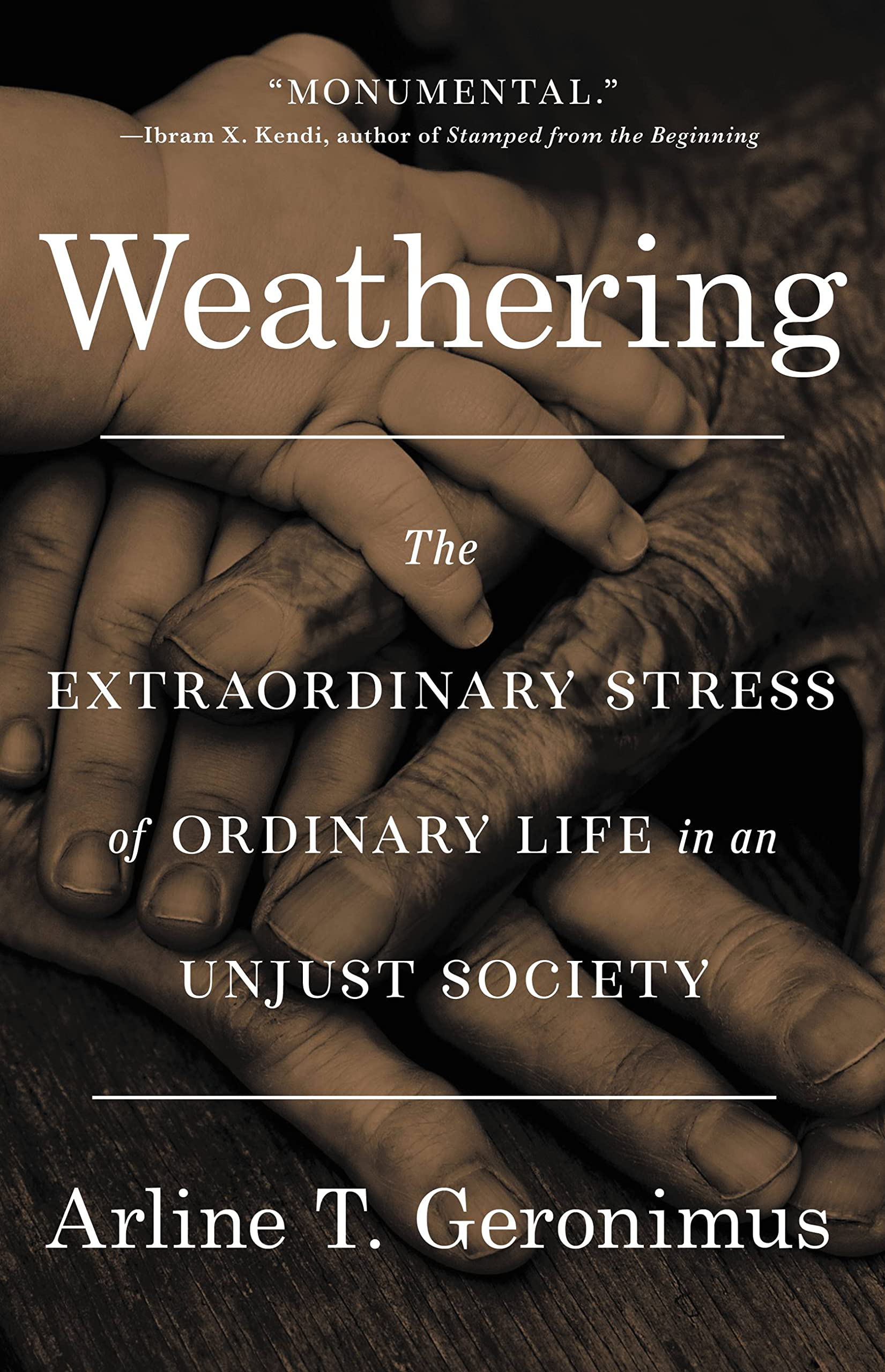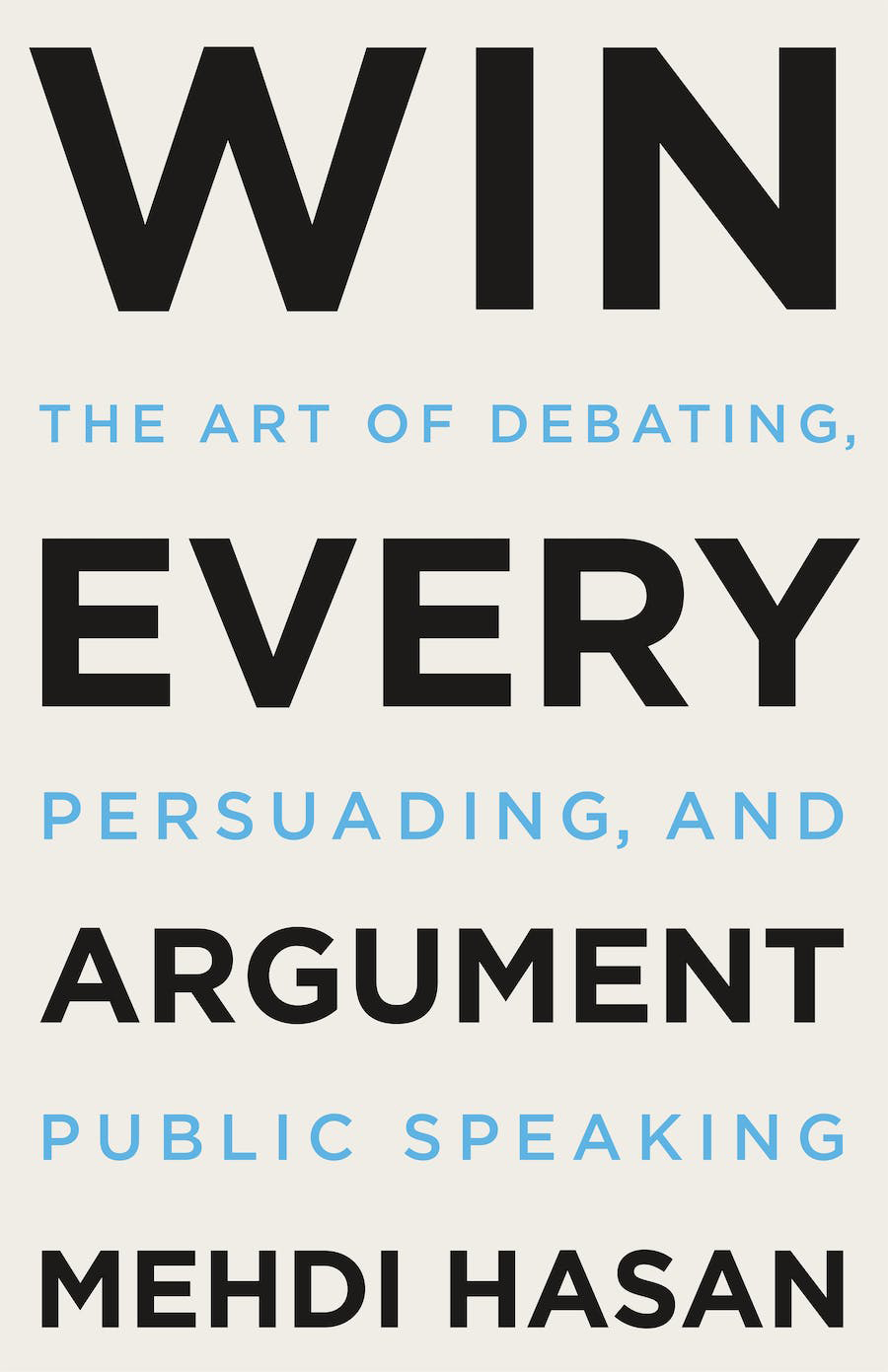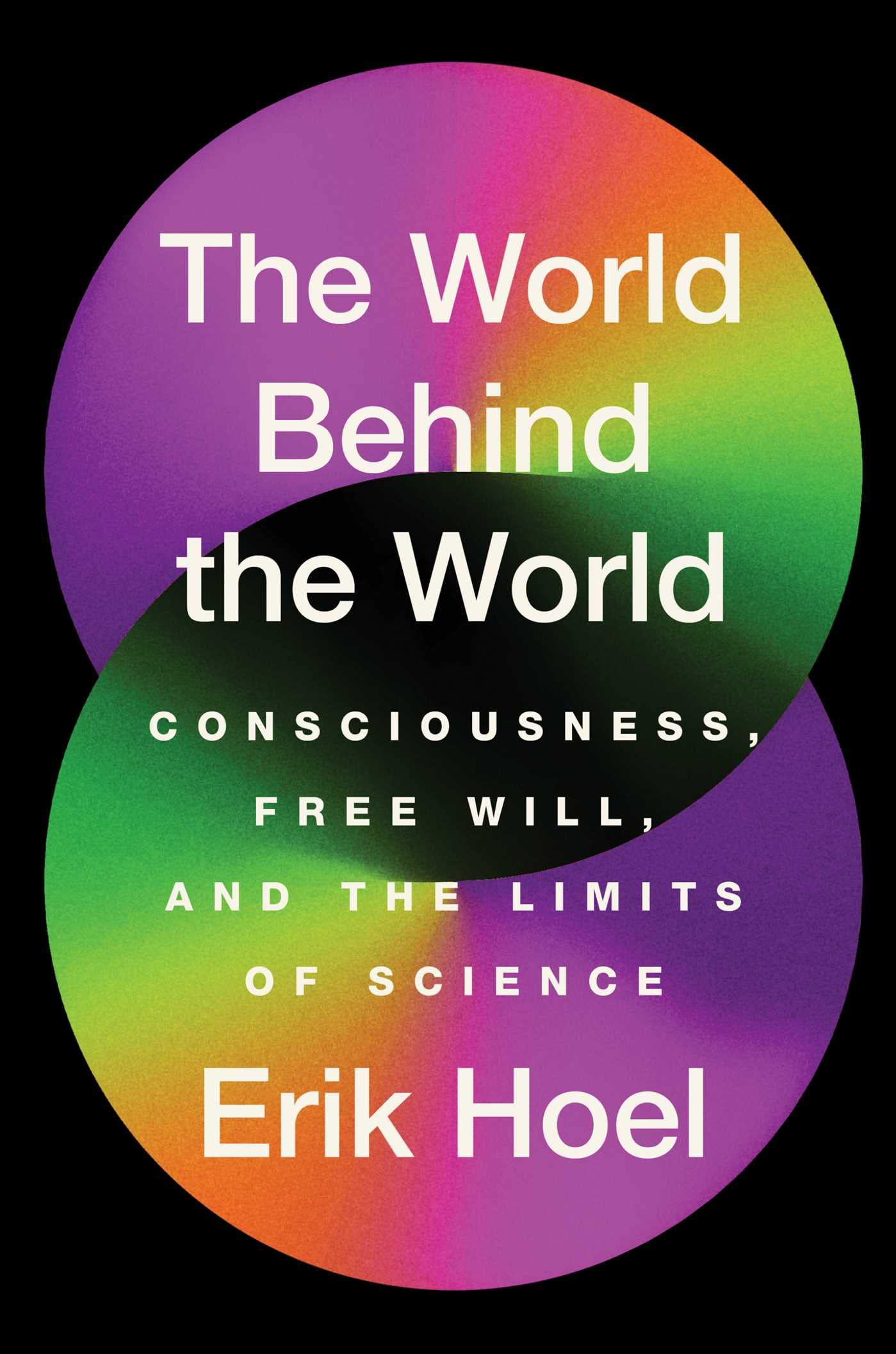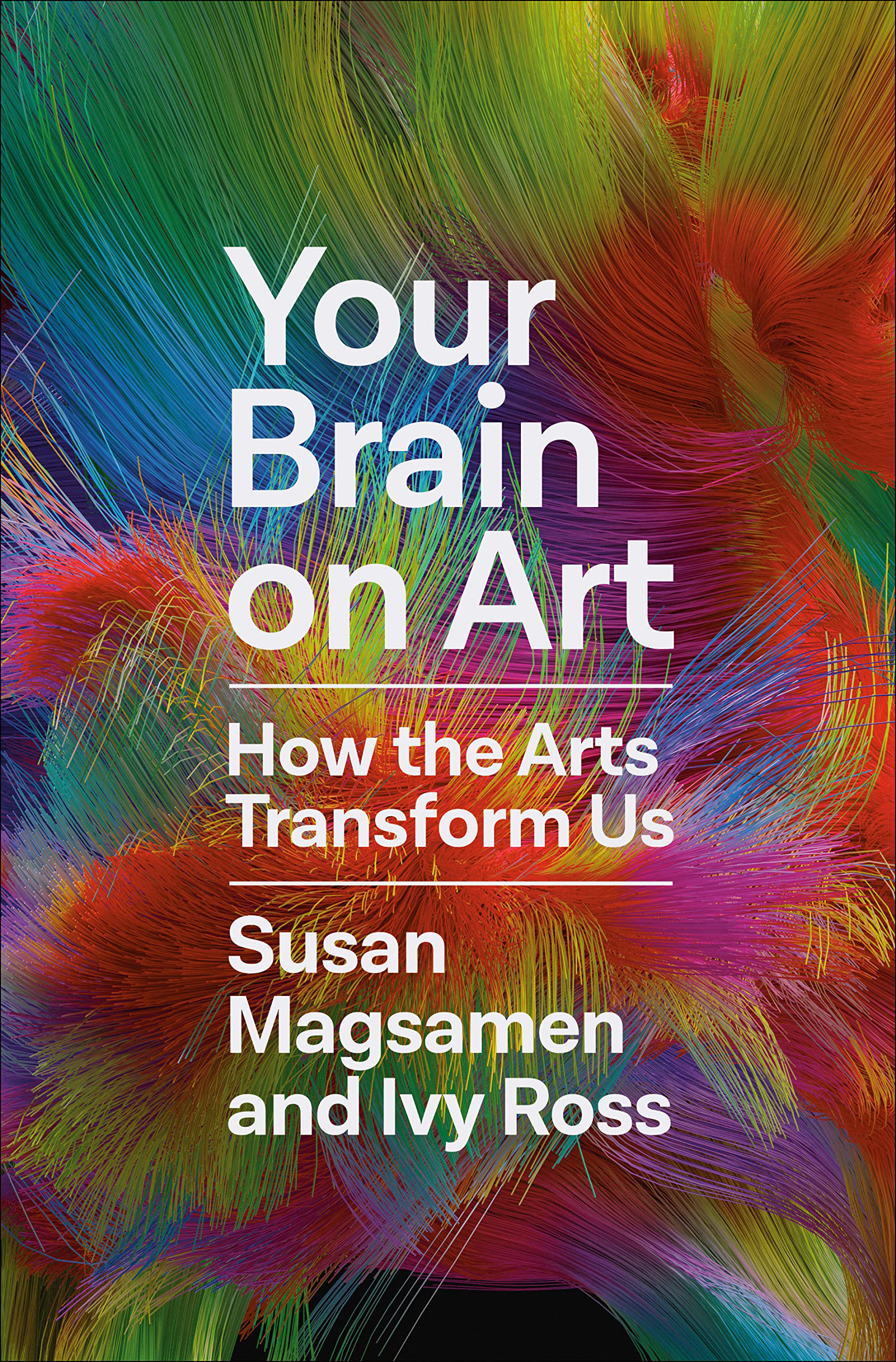Each year we review hundreds of newly published books in the behavioral sciences with the same goal in mind: to select those that stretch our thinking, surprise us, delight us, and help us better understand ourselves and our world.
Because the behavioral sciences cover a lot of ground, so does this list. And like the behavioral sciences, this list resists a single categorization. There are books on intuition, innovation, and intelligence; poverty, probability, and technology. There are titles that offer a history of creativity, a theory of everyone, and a look at the possibility of life on other planets.
For those who are curious about other people, this expansive terrain is your playground. Please allow us to invite you in. Welcome to our selection of notable behavioral science books published in 2023.
— Antonia Violante, Books Editor, and Evan Nesterak, Editor-in-Chief
P.S—You can find our list of notable behavioral science books from 2022 here and 2021 here.
Join Our February Books Conversation
In February, join Books Editor Antonia Violante and Editor-in-Chief Evan Nesterak for a conversation about this year’s Notable Books List. Get recommendations, discuss your personal favorites, learn more about our process, and connect with other Behavioral Scientist readers.
The event will be open to Supporters of Behavioral Scientist. You can become a Supporter at any amount you choose, and if you become a Supporter today, you’ll help Behavioral Scientist unlock $20,000, as part of a matching grant. As a nonprofit and a small team—$20,000 would allow Behavioral Scientist to add a part-time editor in 2024.
Become a Supporter today, help grow the Behavioral Scientist, and sign up to talk books in February.
Already a Behavioral Scientist Supporter? Sign up for the event here.
Anatomy of a Breakthrough: How to Get Unstuck When It Matters Most
By Adam Alter
From the back cover: “Almost everyone feels stuck in some way. Whether you’re muddling through a midlife crisis, wrestling writer’s block, trapped in a thankless job, or trying to remedy a fraying friendship, the resulting emotion is usually a mix of anxiety, uncertainty, fear, anger, and numbness. But it doesn’t have to be this way. Anatomy of a Breakthrough is the roadmap we all need to escape our inertia and flourish in the face of friction.”
Read an excerpt from Anatomy of a Breakthrough on Behavioral Scientist: “Often, the best way to get unstuck on the quest for originality is to combine two old ideas to form a new one, rather than searching for a single, novel creative nugget.”
Awe: The New Science of Everyday Wonder and How It Can Transform Your Life
By Dacher Keltner
From the back cover: “Awe is mysterious. How do we begin to quantify the goose bumps we feel when we see the Grand Canyon, or the utter amazement when we watch a child walk for the first time? … In Awe, Dacher Keltner presents a radical investigation and deeply personal inquiry into this elusive emotion. Revealing new research into how awe transforms our brains and bodies, alongside an examination of awe across history, culture, and within his own life during a period of grief, Keltner shows us how cultivating awe in our everyday life leads us to appreciate what is most humane in our human nature.”
Read our conversation with the author on Behavioral Scientist: “In clever and imaginative ways, Keltner has researched what awe is and how it moves us. He’s conducted natural experiments using the awe-inducing beauty of national parks … He’s traveled to prisons, monasteries, and artists’ studios to conduct careful ethnographic research of people’s awe-filled experiences.”
The Battle for Your Brain: Defending the Right to Think Freely in the Age of Neurotechnology
By Nita A. Farahany
From the back cover: “Imagine a world where your brain can be interrogated to learn your political beliefs, your thoughts can be used as evidence of a crime, and your own feelings can be held against you. A world where people who suffer from epilepsy receive alerts moments before a seizure, and the average person can peer into their own mind to eliminate painful memories or cure addictions … The Battle for Your Brain offers a path forward to navigate the complex legal and ethical dilemmas that will fundamentally impact our freedom to understand, shape, and define ourselves.”
Behavioral Public Policy in a Global Context: Practical Lessons from Outside the Nudge Unit
Edited by Michael Sanders, Syon Bhanot, and Shibeal O’Flaherty
From the back cover: “There are now hundreds of entities – international organizations, governments, business, and nonprofits—building and investing in internal behavioral science teams. Unfortunately, most of the hard work of putting these teams together and applying behavioral science insights happens ‘behind the scenes.’ This book unearths some of the stories and insights from pioneers in applied behavioral science.”
A Brief History of Intelligence: Evolution, AI, and the Five Breakthroughs That Made Our Brains
By Max Bennett
From the back cover: “A Brief History of Intelligence, Bennett bridges the gap between neuroscience and AI to tell the brain’s evolutionary story, revealing how understanding that story can help shape the next generation of AI breakthroughs. Deploying a fresh perspective and working with the support of many top minds in neuroscience, Bennett consolidates this immense history into an approachable new framework.”
The Cult of Creativity: A Surprisingly Recent History
By Samuel W. Franklin
From the back cover: “The idea that there is such a thing as ‘creativity’—and that it can be cultivated—is surprisingly recent, entering our everyday speech in the 1950s … Creativity was championed by a cluster of professionals—psychologists, engineers, and advertising people—as a cure for the conformity and alienation they feared was stifling American ingenuity. It was touted as a force of individualism and the human spirit, a new middle-class aspiration that suited the needs of corporate America and the spirit of anticommunism.”
Read an excerpt from The Cult of Creativity on Behavioral Scientist: “How did we so quickly go from never talking about creativity to constantly talking about, it, and even anointing it as the reigning value of our time?”
Doing Harm: How the World’s Largest Psychological Association Lost Its Way in the War on Terror
By Roy J. Eidelson
From the back cover: “In the months after 9/11 it became clear that the White House, the Department of Defense, and the Central Intelligence Agency were prepared to ignore well-established international law and human rights standards in prosecuting the war on terror. It was less clear, however, that some of Eidelson’s fellow psychologists would become part of the abusive and torturous operations at overseas CIA black sites and Guantanamo Bay. Nor was it initially clear that this ruthless enterprise would garner acquiescence and support from the APA’s leadership. Doing Harm examines how and why the APA failed to join human rights groups in efforts to constrain the US government’s unbridled pursuit of security and retribution.”
Everyday Utopia: What 2,000 Years of Wild Experiments Can Teach Us About the Good Life
By Kristen R. Ghodsee
From the back cover: “Ever since, humans have been dreaming up better ways to organize how we live together, pool our resources, raise our children, and determine who’s part of our families. Some of these experiments burned brightly for only a brief while, but others carry on today.”
The Experience Machine: How Our Minds Predict and Shape Reality
By Andy Clark
From the back cover: “For as long as we’ve studied human cognition, we’ve believed that our senses give us direct access to the world. What we see is what’s really there–or so the thinking goes. But new discoveries in neuroscience and psychology have turned this assumption on its head. What if rather than perceiving reality passively, your mind actively predicts it?”

Fires in the Dark: Healing the Unquiet Mind
By Kay Redfield Jamison
From the back cover: “In this expansive cultural history of the treatment and healing of mental suffering, Kay Jamison writes about psychotherapy, what makes a great healer, and the role of imagination and memory in regenerating the mind.”
Fool Proof: How Fear of Playing the Sucker Shapes Our Selves and the Social Order—And What We Can Do about It
By Tess Wilkinson-Ryan
From the back cover: “Most of us are constantly navigating two sets of imperatives: how to be successful and how to be good. The fear of being suckered whispers that you can’t do both, operating as a quiet caution against leaps of faith and acts of altruism. University of Pennsylvania law professor and moral psychologist Tess Wilkinson-Ryan brings evidence from studies in psychology, sociology, and economics to show how the sucker construct shapes, and distorts, human decision-making.”
Foolproof: Why Misinformation Infects Our Minds and How to Build Immunity
By Sander van der Linden
From the back cover: “From fake news to conspiracy theories, from inflammatory memes to misleading headlines, misinformation has swiftly become the defining problem of our era. The crisis threatens the integrity of our democracies, our ability to cultivate trusting relationships, even our physical and psychological well-being—yet most attempts to combat it have proven insufficient. In Foolproof, one of the world’s leading experts on misinformation lays out a crucial new paradigm for understanding and defending ourselves against the worldwide infodemic.”
Read an adaptation from Foolproof on Behavioral Scientist: “The fact that Facebook likes just so happen to correlate, to a certain degree, with people’s personalities does not imply that targeting people with an ad based on their personalities actually causes them to do anything. Or does it?”
Generations: The Real Differences Between Gen Z, Millennials, Gen X, Boomers, and Silents—And What They Mean for America’s Future
By Jean M. Twenge
From the back cover: “[A] portrait of the six generations that currently live in the United States and how they connect, conflict, and compete with one another … Jean Twenge does a deep dive into a treasure trove of long-running, government-funded surveys and databases … Are we truly defined by major historical events, such as the Great Depression for the Silents and September 11 for Millennials? Or, as Twenge argues, is it the rapid evolution of technology that differentiates the generations?”
The Good Life: Lessons from the World’s Longest Scientific Study of Happiness
By Robert Waldinger and Marc Schulz
From the back cover: “What makes for a happy life, a fulfilling life? A good life? According to the directors of the Harvard Study of Adult Development, the longest scientific study of happiness ever conducted, the answer to these questions may be closer than you realize.”
Hidden Potential: The Science of Achieving Greater Things
By Adam Grant
From the back cover: “We underestimate the range of skills that we can learn and how good we can become. We can all improve at improving. And when opportunity doesn’t knock, there are ways to build a door. Hidden Potential offers a new framework for raising aspirations and exceeding expectations.”
Read an excerpt from Hidden Potential on Behavioral Scientist: “The point of engaging guides isn’t to blindly follow their leads … The goal is to get your guides to drop pins—the key landmarks and turning points from their climbs.”
How Economics Can Save the World: Simple Ideas to Solve Our Biggest Problems
By Erik Angner
From the back cover: “With a healthy dose of optimism, and packed with stories of economics in everyday situations, Erik Angner demonstrates the methods he and his fellow economists use to help improve our lives and the society in which we live. He shows us that economics can be a powerful force for good, awakening the possibility of a happier, more just and more sustainable world.”
Read an excerpt from How Economics Can Save the World on Behavioral Scientist: “Elinor Ostrom believed in the power of economics to ‘bring out the best in humans.’ The way to do it, she thought, was to help them build community—developing the rich network of relationships that form the fabric of a society.”
How to Expect the Unexpected: The Science of Making Predictions—and the Art of Knowing When Not To
By Kit Yates
From the back cover: “From religious oracles to weather forecasters, and from politicians to economists, we are subjected to poor predictions all the time…This book will teach you how and why predictions go wrong, help you to spot phony forecasts, and give you a better chance of getting your own predictions correct.”
Read an excerpt from How to Expect the Unexpected on Behavioral Scientist: “Most of us tend to think of randomness as being “well spaced” … genuinely random distributions seem to contradict our inherent ideas of what randomness should look like.”
The Intelligence of Intuition
By Gerd Gigerenzer
From the back cover: “This book proposes that intuition is a form of unconscious intelligence based on years of experience that evolved to deal with uncertain and dynamic situations where logic and big data algorithms are of little benefit. Gigerenzer introduces the scientific study of intuition and shows that intuition is not irrational caprice but is instead based on smart heuristics.”
I’ve Been Thinking
By Daniel C. Dennett
From the back cover: “Daniel C. Dennett, preeminent philosopher and cognitive scientist, has spent his career considering the thorniest, most fundamental mysteries of the mind … In I’ve Been Thinking, he reflects on his amazing career and lifelong scientific fascinations.”
Read an excerpt from I’ve Been Thinking on Behavioral Scientist: “Take courage and set out to write up the Great Discovery; if after many hours of red-hot thinking and writing you discover to your dismay a fatal flaw … all is not lost. Go back to the first paragraph and write something along the lines of “It is tempting to think that … ”
Jellyfish Age Backwards: Nature’s Secrets to Longevity
By Nicklas Brendborg
From the back cover: “Jellyfish Age Backwards reveals lifespans we cannot imagine and physiological gifts that feel closer to magic than reality: There is a Greenland shark that was 286 years old when the Titanic sank, and is currently 390, making it older than the United States … There’s a species of jellyfish, the size of a fingernail, that can age forwards, then, when threatened, age backwards and begin the process all over again. Mixing cutting-edge research and stories from habitats all around the world, molecular biologist Nicklas Brendborg explores extended life cycles in all its varieties.”
Magic Words: What to Say to Get Your Way
By Jonah Berger
From the back cover: “Words are how we persuade, communicate, and connect. They’re how leaders lead, salespeople sell, and parents parent. They’re how teachers teach, policymakers govern, and doctors explain … But certain words are more impactful than others. They’re better at changing minds, engaging audiences, and driving action. What are these magic words, and how can we take advantage of their power?”
Read an excerpt from Magic Words on Behavioral Scientist: “Concrete language is great for increasing understanding or for making complex topics easier to comprehend … When it comes to things like describing a company’s growth potential, abstract language is better.”
Mixed Signals: How Incentives Really Work
By Uri Gneezy
From the back cover: “Incentives send powerful signals that aim to influence behavior. But often there is a conflict between what we say and what we do in response to these incentives. The result: mixed signals … Behavioral economist Uri Gneezy explains why incentives often fail and demonstrates how the right incentives can change behavior by aligning with signals for better results.”
Read an excerpt from Mixed Signals on Behavioral Scientist: “Seed money and matching grants have been proven to be effective in increasing donor contributions … We proposed a third alternative incentive: telling donors that their donation would be overhead-free.”
Nobody’s Fool: Why We Get Taken in and What We Can Do about It
By Daniel Simons and Christopher Chabris
From the back cover: “From phishing scams to Ponzi schemes, fraudulent science to fake art, chess cheaters to crypto hucksters, and marketers to magicians, our world brims with deception. In Nobody’s Fool, psychologists Daniel Simons and Christopher Chabris show us how to avoid being taken in. They describe the key habits of thinking and reasoning that serve us well most of the time but make us vulnerable—like our tendency to accept what we see, stick to our commitments, and overvalue precision and consistency.”
Read and excerpt from Nobody’s Fool on Behavioral Scientist: The possibility grid is a universal tool to draw attention to what is absent. It alerts you to think about rates of success rather than stories of successes.
Outsmart Your Brain: Why Learning Is Hard and How You Can Make It Easy
By Daniel T. Willingham
From the back cover: “Discover how to study more efficiently and effectively … Each chapter provides clear and specific strategies while also explaining why traditional study processes do not work.”
The Possibility of Life: Science, Imagination, and Our Quest for Kinship in the Cosmos
By Jaime Green
From the back cover: “One of the most powerful questions humans ask about the cosmos is: Are we alone? While the science behind this inquiry is fascinating, it doesn’t exist in a vacuum. It is a reflection of our values, our fears, and most importantly, our enduring sense of hope … The Possibility of Life explores our evolving conception of the cosmos to ask an even deeper question: What does it mean to be human?”
Read and excerpt from The Possibility of Life on Behavioral Scientist: Discovering new planets is an imaginative process. Astronomers can decipher a planet’s weight and temperature, but it takes an artist to interpret the numbers into a place we can imagine and understand.
Poverty, By America
By Matthew Desmond
From the back cover: “The United States, the richest country on earth, has more poverty than any other advanced democracy. Why? Why does this land of plenty allow one in every eight of its children to go without basic necessities, permit scores of its citizens to live and die on the streets, and authorize its corporations to pay poverty wages? … Sociologist Matthew Desmond draws on history, research, and original reporting to show how affluent Americans knowingly and unknowingly keep poor people poor.”
Power and Progress: Our Thousand-Year Struggle Over Technology and Prosperity
By Daron Acemoglu and Simon Johnson
From the back cover: “A thousand years of history and contemporary evidence make one thing clear: progress depends on the choices we make about technology. New ways of organizing production and communication can either serve the narrow interests of an elite or become the foundation for widespread prosperity.”
The Power of Language: How the Codes We Use to Think, Speak, and Live Transform Our Minds
By Viorica Marian
From the back cover: “While you may well think you speak only one language, in fact your mind accommodates multiple codes of communication. Some people speak Spanish, some Mandarin. Some speak poetry, some are fluent in math. The human brain is built to use multiple languages, and using more languages opens doors to creativity, brain health, and cognitive control.”
Read an excerpt from The Power of Language on Behavioral Scientist: “When given the Japanese words heiwa and tatakai and the English words war and peace, they were able to correctly guess that heiwa means ‘peace’ and tatakai means ‘war’ more often than one would expect by chance.”
Psych: The Story of the Human Mind
By Paul Bloom
From the back cover: “How does the brain—a three-pound wrinkly mass—give rise to intelligence and conscious experience? Was Freud right that we are all plagued by forbidden sexual desires? What is the function of emotions such as disgust, gratitude, and shame? … [A] new perspective on the modern science of psychology, based on one of Yale’s most popular courses of all time.”
Psychonauts: Drugs and the Making of the Modern Mind
By Mike Jay
From the back cover: “A provocative and original history of the scientists and writers, artists and philosophers who took drugs to explore the hidden regions of the mind … From Sigmund Freud’s experiments with cocaine to William James’s epiphany on nitrous oxide, Mike Jay brilliantly recovers a lost intellectual tradition of drug-taking that fed the birth of psychology, the discovery of the unconscious, and the emergence of modernism.”
Putting Ourselves Back in the Equation: Why Physicists Are Studying Human Consciousness and AI to Unravel the Mysteries of the Universe
By George Musser
From the back cover: “Neuroscientists have painstakingly built up an understanding of the structure of the brain. Could this help physicists understand the levels of self-organization they observe in other systems? These same physicists, meanwhile, are trying to explain how particles organize themselves into the objects around us. Could their discoveries help explain how neurons produce our conscious experience?”
Random Acts of Medicine: The Hidden Forces That Sway Doctors, Impact Patients, and Shape Our Health
By Anupam B. Jena and Christopher Worsham
From the back cover: “[Jena and Worsham] help us see the way our health is shaped by forces invisible to the untrained eye. Is there ever a good time to have a heart attack? Do you choose the veteran doctor or the rookie? Do you really need the surgery your doctor recommends? These questions are rife with significance; their impact can be life changing. Addressing them in a style that’s both animated and enlightening, Random Acts of Medicine empowers you to see past the white coat and find out what really makes medicine work—and how it could work better.”
Rethinking Intelligence: A Radical New Understanding of Our Human Potential
By Rina Bliss
From the back cover: “A genetics expert and professor challenges our understanding of intelligence, explaining what it truly means to be ‘smart,’ why conventional assessments are misleading, and what everyone can do to optimize their potential.”
Right Kind of Wrong: The Science of Failing Well
By Amy Edmondson
From the back cover: “In Right Kind of Wrong, Edmondson provides the framework to think, discuss, and practice failure wisely. Outlining the three archetypes of failure, Amy showcases how to minimize unproductive failure while maximizing what we gain from flubs of all stripes.”
Read an excerpt from Right Kind of Wrong on Behavioral Scientist: “Leaning toward my computer screen, I saw that the correlation was in the wrong direction. The data were saying the opposite of what I’d predicted. Better teams appeared to have higher, not lower, error rates… Although I didn’t yet know it, my no longer straightforward research project was producing an intelligent failure that would lead to an unexpected discovery.”
Selfless: The Social Creation of “You”
By Brian Lowery
From the back cover: “In Selfless, Brian Lowery argues for the radical idea that the ‘self’ as we know it … is a social construct, created in our relationships and social interactions. We are unique because our individual pattern of relationships is unique. We change because our relationships change. Your self isn’t just you, it’s all around you.”
A Theory of Everyone: The New Science of Who We Are, How We Got Here, and Where We’re Going
By Michael Muthukrishna
From the back cover: “Muthukrishna argues that it is our unique ability to create culture, a shared body of knowledge, skills, and experience passed on from generation to generation, that has enabled our current dominance. But it is only by understanding and applying the laws of life—the need for energy, innovation, cooperation, and evolution—that we can solve the practical and existential challenges we face as a species.”
Thinking with Your Hands: The Surprising Science Behind How Gestures Shape Our Thoughts
By Susan Goldin-Meadow
From the back cover: “We all know people who talk with their hands—but do they know what they’re saying with them? Our gestures can reveal and contradict us, and express thoughts we may not even know we’re thinking. In Thinking with Your Hands, esteemed cognitive psychologist Susan Goldin-Meadow argues that gesture is vital to how we think, learn, and communicate.”
Tomorrowmind: Thriving at Work with Resilience, Creativity, and Connection–Now and in an Uncertain Future
By Gabriella Rosen Kellerman and Martin E. P. Seligman
From the back cover: “In recent years, workplace toxicity, industry volatility, and technology-driven turnover have threatened the psychological well-being of employees. When we can’t flourish at work, both personal success and corporate productivity suffer. As we sit on the cusp of some of the most turbulent economic changes in history, many of us wonder how we can not only survive but flourish in our careers … Tomorrowmind provides essential plans and actionable advice for facing the uncertain future of work.”
Touch Matters: Handshakes, Hugs, and the New Science on How Touch Can Enhance Your Well-Being
By Michael Banissy
From the back cover: “[A] scientific and sociological exploration of our most underappreciated sense. Every day, we use our sense of touch to navigate the world. A handshake, a pat on the shoulder, a hug—all are essential touches that make up our daily lives … Banissy unfolds the research behind why touch is essential to our well-being.”
Read an excerpt from Touch Matters on Behavioral Scientist: “Simply including brief social contact to a request—such as a touch on the arm—can increase our willingness to take part in surveys, to give money to charity, and even to look after a stranger’s dog.”
Travelers to Unimaginable Lands: Stories of Dementia, the Caregiver, and the Human Brain
By Dasha Kiper
From the back cover: “After getting a master’s degree in clinical psychology, Dasha Kiper became the live-in caregiver for a Holocaust survivor with Alzheimer’s disease. For a year, she endured the emotional strain of looking after a person whose condition disrupts the rules of time, order, and continuity. Inspired by her own experience and her work counseling caregivers in the subsequent decade, Kiper offers an entirely new way to understand the symbiotic relationship between patients and those tending to them.”
We Are Electric: Inside the 200-Year Hunt for Our Body’s Bioelectric Code, and What the Future Holds
By Sally Adee
From the back cover: “In We Are Electric, award-winning science writer Sally Adee takes readers through the thrilling history of bioelectricity and into the future: from the Victorian medical charlatans claiming to use electricity to cure everything from paralysis to diarrhea, to the advances helped along by the giant axons of squids, and finally to the brain implants and electric drugs that await us—and the moral implications therein.”
Weathering: The Extraordinary Stress of Ordinary Life in an Unjust Society
By Arline T. Geronimus
From the back cover: “Dr. Arline T. Geronimus coined the term ‘weathering’ to describe the effects of systemic oppression—including racism and classism—on the body. In Weathering, based on more than 30 years of research, she argues that health and aging have more to do with how society treats us than how well we take care of ourselves. She explains what happens to human bodies as they attempt to withstand and overcome the challenges and insults that society leverages at them, and details how this process ravages their health. And she proposes solutions.”
Wellbeing: Science and Policy
By Richard Layard and Jan-Emmanuel de Neve
From the back cover: “What produces a happy society and a happy life? … We can now answer this question using state-of-the-art empirical evidence. This transforms our ability to base our decisions on the outcomes that matter most, namely the wellbeing of us all including future generations. Written by two of the world’s leading experts on the economics of wellbeing, this book shows how wellbeing can be measured, what causes it and how it can be improved.”
Win Every Argument: The Art of Debating, Persuading, and Public Speaking
By Mehdi Hasan
From the back cover: “Arguments are everywhere—and especially given the fierce debates we’re all embroiled in today, everyone wants to win. In this riveting guide to the art of argument and rhetoric, Hasan shows you how. As a journalist, anchor, and interviewer who has clashed with politicians, generals, spy chiefs, and celebrities from across the world, Hasan reveals his tricks of the trade for the first time.”
Read our conversation with the author on Behavioral Scientist: “Human beings don’t just accept facts blindly. They don’t just accept truth blindly. You have to be able to deploy it … My concern is for the people with facts and truth. Do they know how to communicate that? Are they able to win those arguments?”
The World Behind the World: Consciousness, Free Will, and the Limits of Science
By Erik Hoel
From the back cover: “Throughout history, two perspectives on the world have dueled in our minds: the extrinsic—that of mechanism and physics—and the intrinsic—that of feelings, thoughts, and ideas. The intrinsic perspective allows us to tell stories about our lives, to chart our anger and our lust, to understand our psychologies. The extrinsic allows us to chart the physical world, to build upon it, and to travel across it. … [The] attempt to reconcile these perspectives is the science of consciousness … The World Behind the World is a grand tour of the state of this science, an exploration of the point where tectonic metaphysical forces meet, often in paradoxical conclusions.”
Writing for Busy Readers: Communicate More Effectively in the Real World
By Todd Rogers and Jessica Lasky-Fink
From the back cover: “Building on their own research in behavioral science, [Rogers and Fink] outline cognitive facts about how people actually read and distill them into six principles that will transform the power of your writing.”
Read an excerpt from Writing for Busy Readers on Behavioral Scientist: “On average, a wordy message will be dealt with less quickly than a concise message. In the worst case, a wordy message will be relegated to the same fate as the hundreds of other messages that languish in inboxes, never to be read.”
Your Brain on Art: How the Arts Transform Us
By Susan Magsamen and Ivy Ross
From the back cover: “A life-altering journey through the science of neuroaesthetics, which offers proof for how our brains and bodies transform when we participate in the arts—and how this knowledge can improve our health, enable us to flourish, and build stronger communities.”
Your Future Self: How to Make Tomorrow Better Today
By Hal Hershfield
From the back cover: “We’ve all had the desire to travel through time and see what our lives will be like later in life. But while we want the best possible future for ourselves, we often fail to make decisions that would truly make that version of the future a reality … Your Future Self describes the mental mistakes we make in thinking about the future and gives us practical advice for imagining our best future so we can make that vision a reality.”
Read an excerpt from Your Future Self on Behavioral Scientist: “In thinking about the future in a merely surface level way, we end up traveling to a different future than the one we meant to go to.”
Disclosure: Syon Bhanot, whose co-edited book appears on this list, serves as an advisor to Behavioral Scientist. Advisors do not play a role in the editorial decisions of the magazine.
When you purchase a book using a Tertulia link below, we’ll receive a small commission that helps us sustain our nonprofit mission.










